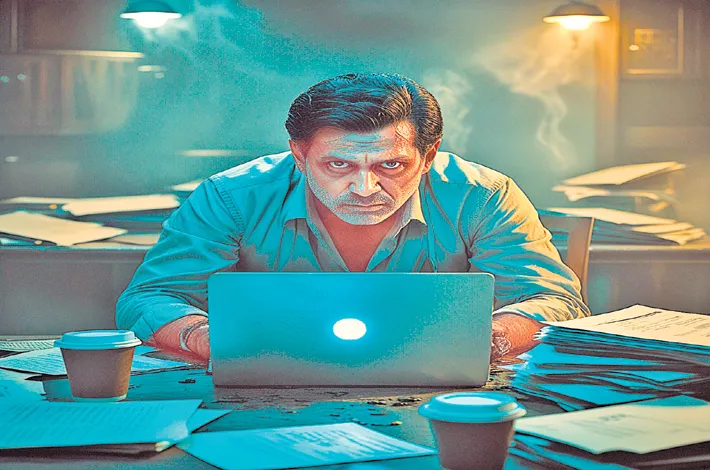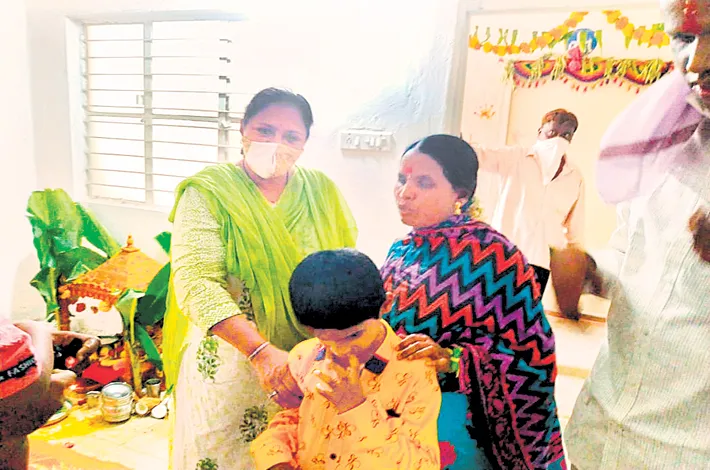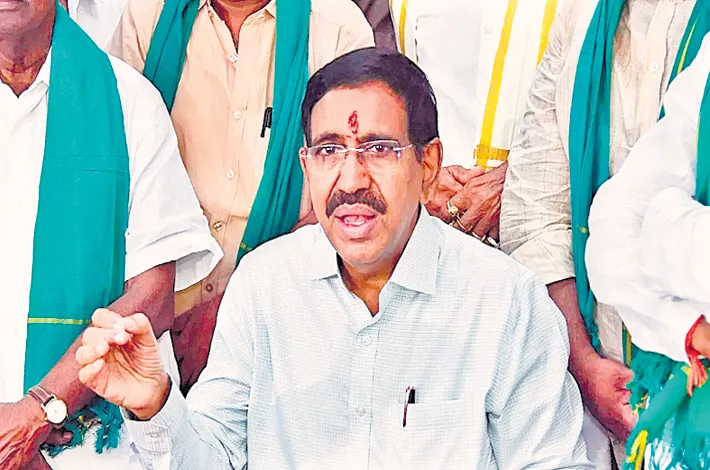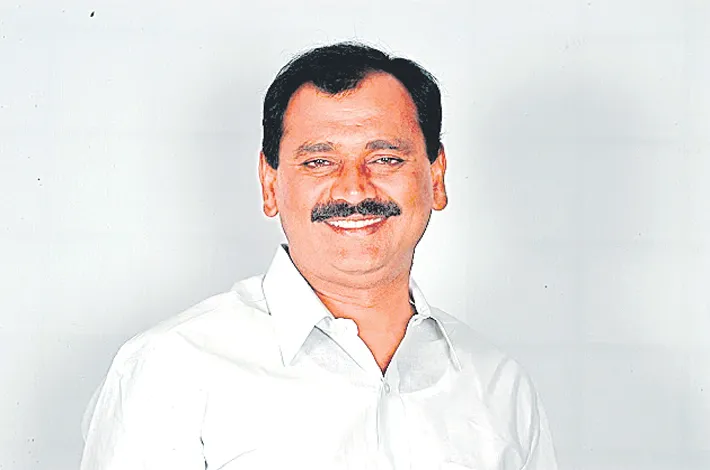The Shadow of Doubt
15-04-2025 12:00:00 AM

Late that night, Vikram drove to the warehouse where Anjali’s body was found, hoping to clear his head. The rain had stopped, leaving an eerie silence. As he stepped inside, his flashlight caught a glint on the floor—a silver locket, missed during the initial sweep. He pried it open, revealing a faded photo of a young woman. His breath caught. It was her—the woman from the killer’s photograph
The monsoon rains battered Delhi, turning the streets into rivers of mud and chaos. In a dimly lit apartment in Hauz Khas, Inspector Vikram Rathore sat hunched over a flickering laptop, his eyes bloodshot from sleepless nights. The case had consumed him for weeks, ever since the first body was found—a young woman, strangled, her lifeless eyes staring at the ceiling of an abandoned warehouse. Her name was Anjali Sharma, a journalist known for digging into stories others avoided. No fingerprints, no witnesses, just a single clue: a cryptic note pinned to her coat that read, “Who Kaun Thi?”
Vikram had seen his share of grisly crimes in his 15 years with the Delhi Police, but this one felt different. The note wasn’t just a taunt; it was a challenge. Two more bodies had turned up since—one a corporate lawyer, the other a retired professor—each with the same note, the same question.
The media had dubbed the killer “The Phantom,” and the city was on edge. Vikram’s superiors were breathing down his neck, demanding answers he didn’t have. His phone buzzed, snapping him out of his thoughts. It was Constable Neha, his partner, her voice urgent. “Sir, we’ve got another one. Same MO. You need to see this.”
Vikram grabbed his raincoat and rushed to the crime scene, a derelict mansion in Mehrauli. The air inside was thick with the stench of decay. In the center of the crumbling ballroom lay a man in his fifties, his throat bruised, his face frozen in terror. Another note, pinned to his chest: “Who Kaun Thi?” But this time, there was something else—a grainy photograph tucked into the victim’s pocket. It showed a woman in a white saree, her face blurred, standing under a streetlamp. Vikram’s gut twisted. The image felt like a memory he couldn’t place.
Back at the station, the team scrambled to identify the latest victim: Rajesh Khanna, a low-profile accountant with no apparent enemies. Vikram pored over the evidence, his mind racing. The victims seemed unrelated—different ages, professions, backgrounds—but the notes tied them together.
He pulled up Anjali’s last articles, searching for a connection. One piece caught his eye: an exposé on a decades-old scandal involving a powerful politician and a mysterious woman who vanished after testifying against him. The woman’s name was never revealed, only referred to as “The Witness.” Could she be the “Who Kaun Thi” the killer was obsessed with?
Neha burst into the room, holding a file. “Sir, I dug into Khanna’s financials. He was funneling money to an offshore account linked to a shell company. Guess who else was tied to it? The lawyer and the professor.”
Vikram’s pulse quickened. “What about Anjali?”
“No direct link, but her last email mentioned meeting a source about ‘a ghost from the past.’ She was onto something big.”
The pieces were falling into place, but the puzzle was far from complete. Vikram’s thoughts kept circling back to the photograph. That woman in the white saree—she haunted him. He hadn’t told anyone, but he’d been seeing her in his dreams, her face always just out of reach. Was it exhaustion, or something more?
Late that night, Vikram drove to the warehouse where Anjali’s body was found, hoping to clear his head. The rain had stopped, leaving an eerie silence. As he stepped inside, his flashlight caught a glint on the floor—a silver locket, missed during the initial sweep. He pried it open, revealing a faded photo of a young woman. His breath caught. It was her—the woman from the killer’s photograph.
The next morning, Vikram tracked the locket to a pawn shop in Chandni Chowk. The owner, a wiry man with nervous eyes, claimed it was sold by a woman who matched the description from the photo. “She comes and goes, like a ghost,” he said. “Always wears white.”
Vikram’s investigation led him to an old case file from 1995, buried in the archives. It detailed the disappearance of a woman named Meera, the whistleblower in the politician’s scandal. Officially, she’d died in a car accident, but rumors persisted that she’d faked her death to escape retribution. The file included a grainy photo—Meera, in a white saree, under a streetlamp. Vikram’s hands trembled. The Phantom wasn’t just killing; they were hunting Meera, or someone tied to her.
As Vikram dug deeper, the danger closed in. Neha was attacked outside her apartment, left with a warning carved into her car: “Stop, or you’re next.” Vikram knew the killer was watching, but he couldn’t stop. He followed a lead to a seedy bar in Old Delhi, where a contact claimed to have seen Meera. Instead, Vikram walked into a trap. A hooded figure lunged from the shadows, a blade flashing. Vikram fought back, but the attacker slipped away, leaving behind another note: “You’re close, Inspector. But who is she?”
Desperate, Vikram turned to the one person who might know the truth—Arjun Malhotra, the disgraced politician from the old scandal, now living in obscurity. Malhotra’s eyes widened when Vikram showed him Meera’s photo. “She’s dead,” he insisted, but his voice cracked. “You’re chasing a ghost.”
That night, Vikram’s dreams turned vivid. Meera stood before him, her face clear at last. “Find me,” she whispered. He woke with a start, his phone ringing. It was Neha. “Sir, we traced the shell company. It’s linked to Malhotra. And there’s an address—a house in Vasant Kunj.”
Vikram sped to the location, his heart pounding. The house was dark, but inside, he found her—Meera, alive, her eyes hollow with fear. She’d been hiding for decades, but someone had found her. Before she could explain, a shot rang out. Malhotra stood in the doorway, a gun in his hand, his face twisted with rage. “You should’ve let it go, Inspector.” Vikram dove for cover as bullets flew. Meera screamed, scrambling to escape. In the chaos, Vikram tackled Malhotra, wrestling the gun away. But Malhotra laughed, blood trickling from his mouth. “You’ll never know who she really was.”
Meera vanished into the night, leaving Vikram with more questions than answers. Malhotra was arrested, but the killings stopped. The Phantom case was closed, officially. Yet Vikram couldn’t shake the feeling that Meera was still out there, a shadow slipping through the cracks of the city, her truth buried in the question that haunted him: Who Kaun Thi?








